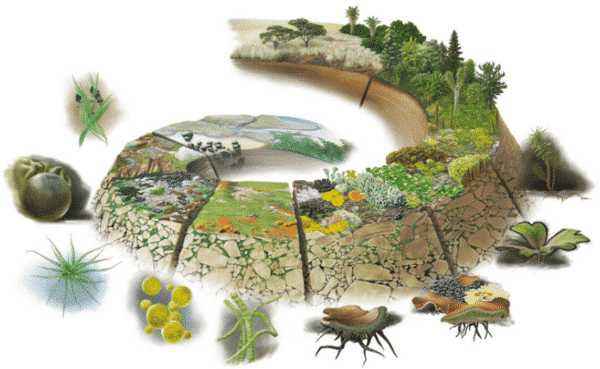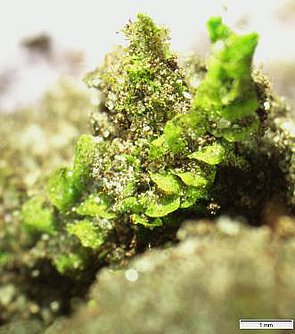Biodiversity and functional role of biological soil crusts II
Biological soil crusts are complex communities consisting of photosynthetically active green algae, cyanobacteria, bryophytes and lichens, heterotrophic fungi, protozoa and bacteria, which cover the top few millimetres of soil.
The organisms and their by-products create a micro-ecosystem, whose ecological function is of great importance in particular on bare soils (e.g. nitrogen fixation by cyanobacteria, primary production, water retention, soil stabilisation or allocation of plant available nutrients).
Although soil crusts are ecologically important, investigations have been mainly focused on arid and semiarid habitats so far. In the first phase we focused on the biodiversity in soil crusts and their function in biogeochemical phosphorus turnover. These correlations will be analysed in greater depth during the current phase.
We plan to link phosphorous turnover and nitrogen cycling in biological soil crusts to the abundance and diversity of genes coding for selected functions driving N and P transformation processes and relate the data to the structure of the crust communities. This project will improve our understanding on the biodiversity and interactions of ALL organisms in BSCs from forest plots of the BEs.
A combination of metagenomic and fatty acid profiling of the community structure of bacteria, archaea, fungi, cyanobacteria and algae will be evaluated for the first time in taxonomic depth (who is there in what numbers?).
The functional role of BSCs will be evaluated in the biogeochemistry of P and N. The concentrations and chemical species of these elements will indicate whether BSCs act as sink or source for P-and N-compounds and identify the drivers for the unstudied P-biogeochemical cycling in BSCs and their quantitative contribution to the P-fluxes (who is doing what?).
1. Increasing SMI will decrease biodiversity, and interactions in microbial network structures will be reduced.
2. Differences in community structure will affect the functionality of the BSC.
3. Microbial diversity in BSCs in the three BEs is comparable at sites with similar land use intensity.
4. BSC communities are involved in transformation from inorganic to organic fractions in the biogeochemical cycling of P and N.
- Metagenomic and transcriptomic analyses
- qPCR targeting specific genes for N- and P-turnover
- fatty acids analyses
- total C, N, P determination











